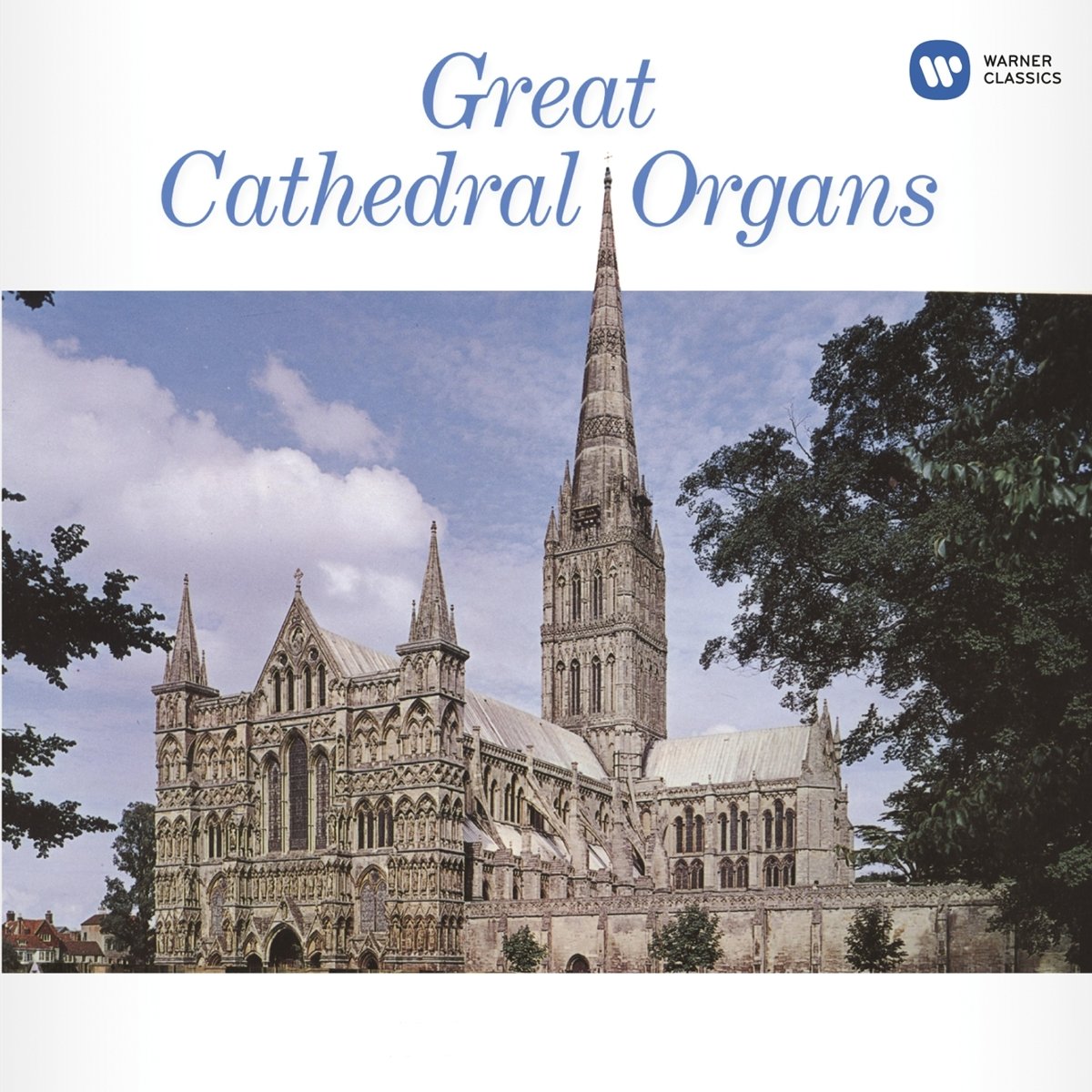 |
|
1 LP -
CSD 3677 - (p) 1970
|
|
ST.
PAUL'S CATHEDRAL - Volume 17
|
|
|
|
|
|
|
|
| Henry PURCELL
(1659-1695) |
Trunpet
Tubes (King Arthur, Act
V) (arr. Dearnley) |
|
|
2' 42" |
A1 |
| Felix MENDELSSOHN
(1809-1847) |
Sonata
No. 2 in C minor, Op. 65 No. 2 |
|
|
10' 13" |
A2 |
|
-
I. Grave - Adagio
|
|
3' 53" |
|
|
|
-
II. Allegro maestoso e vivace
|
|
2' 04" |
|
|
|
-
III. Fuga |
|
4' 16" |
|
|
| Camille SAINT-SAňNS
(1835-1921) |
Seven
Improvisations, Op. 150 |
|
|
6' 42" |
|
|
-
4. Improvisation in A
|
|
2' 36" |
|
A3 |
|
-
7. Improvisation in A minor
|
|
4' 06" |
|
A3 |
| Frank BRIDGE
(1879-1941) |
Allegro
marziale e ben marcato (First
Book of Organ Pieces, No. 3) |
|
|
4' 09" |
A5 |
| Arthur BLISS
(1891-1975) |
Three
Fanfares (arr. Basil Ramsey) |
|
|
4' 15" |
B1 |
|
-
1. The Sovereign's Fanfare
|
|
1' 47" |
|
|
|
-
2. Fanfare for the Bride
|
|
0' 50" |
|
|
|
-
3. A Wedding Fanfare |
|
1' 38" |
|
|
| Herbert HOWELLS
(1892-1983) |
Psalm-Prelude
Set 1 No. 1 [Psal 34 v.6: Lo,
the poor crieth, and the Lord
heareth him]
|
|
|
6' 46" |
B2 |
| Charles IVES
(1874-1954) |
Variations
on "America" (1891)
|
|
|
10' 12" |
B3 |
|
|
|
|
Christopher
DEARNLEY, Organist
|
|
|
|
|
Recorded
at: |
|
St.
Paul's Cathedral (Great Britain) -
28-30 October 1969
|
|
|
Live / Studio
|
|
Studio |
|
|
Producer |
|
Brian
B. Culverhouse
|
|
|
Balance
engineer
|
|
Stuart
Eltham
|
|
|
First LP
Edition
|
|
EMI
- His Master's Voice | CSD 3677
| 1 LP | durata 42' 59" | (p)
1970
|
|
|
CD Edition |
|
EMI
Classics | 0 85295 2 | 13 CDs
| LC 06646 | (c)
2011 | ADD
|
|
|
Note |
|
-
|
|
|
|
|
The original
19 LPs in CD

13 CDs - 0
85295 2 - (c) 2011
(in CD 10:
tracks 26-22 & CD 11:
tracks 1-5)
|
This
programme is designed, in part,
to demonstrate The various
features of the St. Paul's organ
as it has evolved over the last
hundred years. Added here, to
assist the listener, is a
summary of the registration used
for this recording.
The Mendelssohn and Ives pieces
use the whole range of the
instrument, both Chancel and
dome sections. (In Variations
on "America" the bitonal
interludes contrast the Dome
diapasons with the Solo and
Altar organs; of particular
interest in the statement of the
theme is the use of the Great
open diapason No.3 - a survivor
from the original Bernard Smith
organ.) The pieces by Howells
and Saint-SaŽns are registered
entirely on the main part of the
organ in the Chancel, and the
first of the two Improvisations
by Saint-SaŽns
features the flutes on the
Solo and Altar organs. The
chorus reeds on the Great
and Swell are heard in the
first two Fanfares
by Bliss, and
those on the Solo (with the Dome
tuba) in the third. The Dome
diapason chorus and pedal
sections are used exclusively
for Bridge's Allegro
marziale, and the Dome
reeds are added at its
conclusion. The latter are
featured in Purcell's Trunpet
Tunes: the first tune is
played on the Chancel tuba
(accompanied on the Great
organ), the second on the famous
trompette militaire
(repeated on the Dome diapasons
and pedal), and the return of
the first tune on the full Dome
chorus with all three tubas
accompanied by the 32 ft. contra
bombarde.
The main organ is placed in the
Chancel in two cases, the Great
and tubas in the north case and
the Choir and Swell departments
in the south case. Eastwards,
over the galleries on the north
side, are placed the Solo,
Chancel Pedal, and (under the
next arch) the Altar organs. In
the Dome quarter-galleries are
(on the south-east) the diapason
chorus and (on the north-east)
the Dome pedal, tubas, and
trompette militaire.
©
Christopher Dearnley
CHRISTOPHER HUGH DEARNLEY.
Born 1930 in Wolverhampton.
Organist of Salisbury Cathedral
1957 to 1968, subsequently of
St. Paul's Cathedral.
|
|